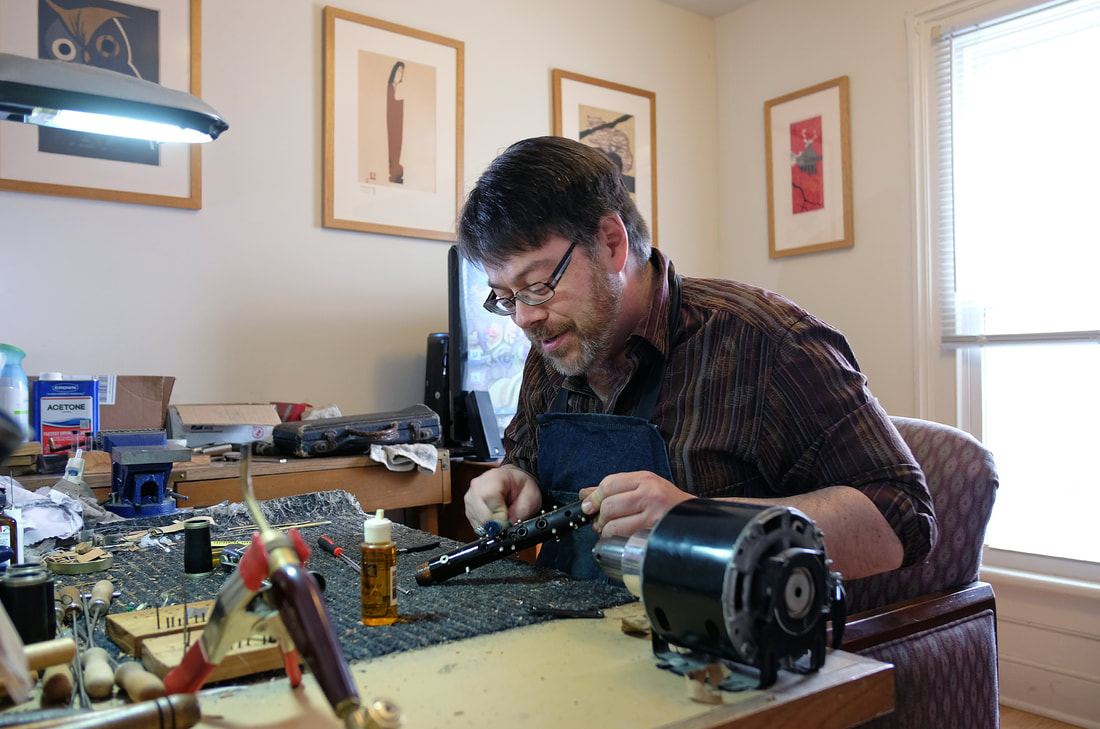 I recently received a horn for restoration and was impressed with the look of the previous overhaul: cleanly beveled cork pads on the upper joint, and tan kid on the lower. The only problem was that it didn't pull anything close to a vacuum: Those beautiful cork pads had been laboriously installed on a 1920's Albert system clarinet, whose tone-holes were nowhere near flat or sharp enough to make a clean impression...and, hence, a good seal! This got me thinking about the pros and cons of cork pads; many people request them in an overhaul, often without any clear reason for doing so other than that they heard it was the 'thing to do'. On a modern horn with crisp, flat tone-holes cork is a joy, giving a great seal and improving the clarity and projection of dull notes. On anything older than a couple decades, I will generally try to discourage them from full cork on the upper joint, and here's why: A tone-hole is cut flat into a curved, wooden surface. Wood changes over time, flexing, swelling and shrinking with variations in temperature and humidity. A new tone-hole will be flat and sharp, if you're lucky - an old one is often anything but! Aside from changes in the wood itself, there is also the quality of the initial machining and subsequent overhauls to consider: Hasty/careless work will sometimes leave small nicks/dings on the edge, and sometimes you'll see evidence that someone has attempted to 'reface' a tone-hole, doing more harm than good. In these circumstances, a cork pad is more of a liability than an asset! Its firm surface, well suited for taking a clean impression from a perfect tone-hole, won't contour to an imperfect one and the result is a poor seal. This can be hard to diagnose subsequently, as the ring that cork takes will fool a paper feeler with its bite, leaving you scratching your head as to where that leak is coming from! On the 50+ year old instruments that I commonly service, I'll use cork on the register key (since its tube doesn't change with age) and maybe A/Ab if the throat is stuffy and the tone-holes look good: often they'll need a little 'touching up' to pass muster. Other than that, I stick with leather, which is long lasting, contours well to the aging tone-hole, and has a feel more similar to the fingertip for even response. I'd be interested to hear about other people's experience with cork on older horns....
0 Comments
Your comment will be posted after it is approved.
Leave a Reply. |
Archives
February 2024
AuthorThe Licorice Shtick Blog is the creation of the Vintage Clarinet Doctor, a Winston Salem, NC based woodwind instrument repair shop specializing in vintage and antique clarinets, saxophones, and the occasional flute. Categories |

 RSS Feed
RSS Feed